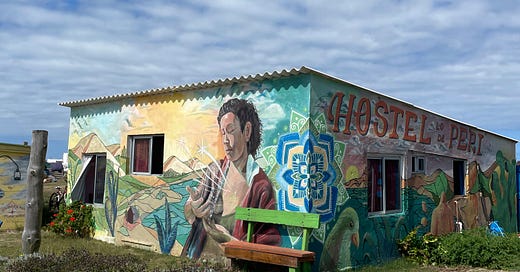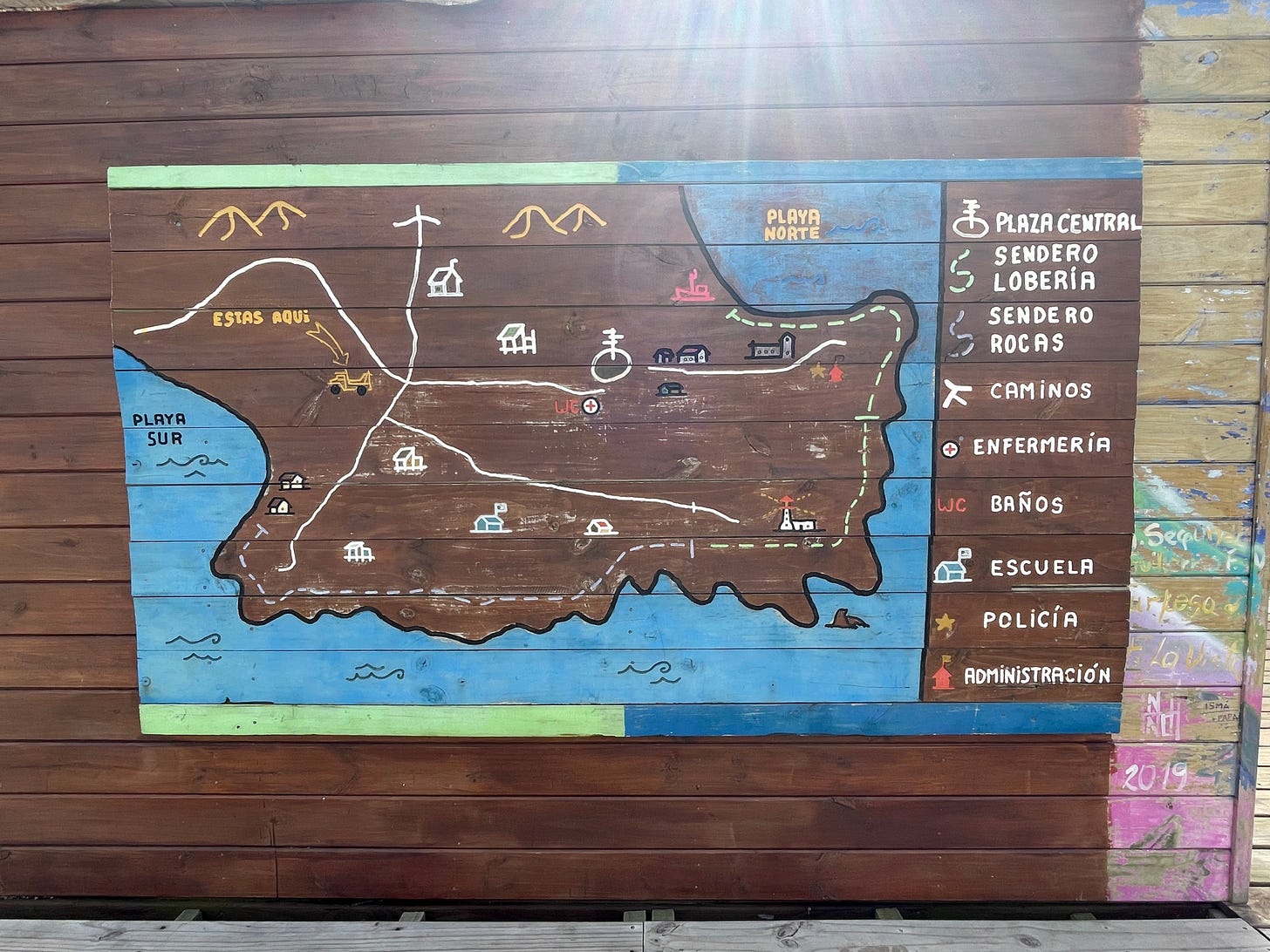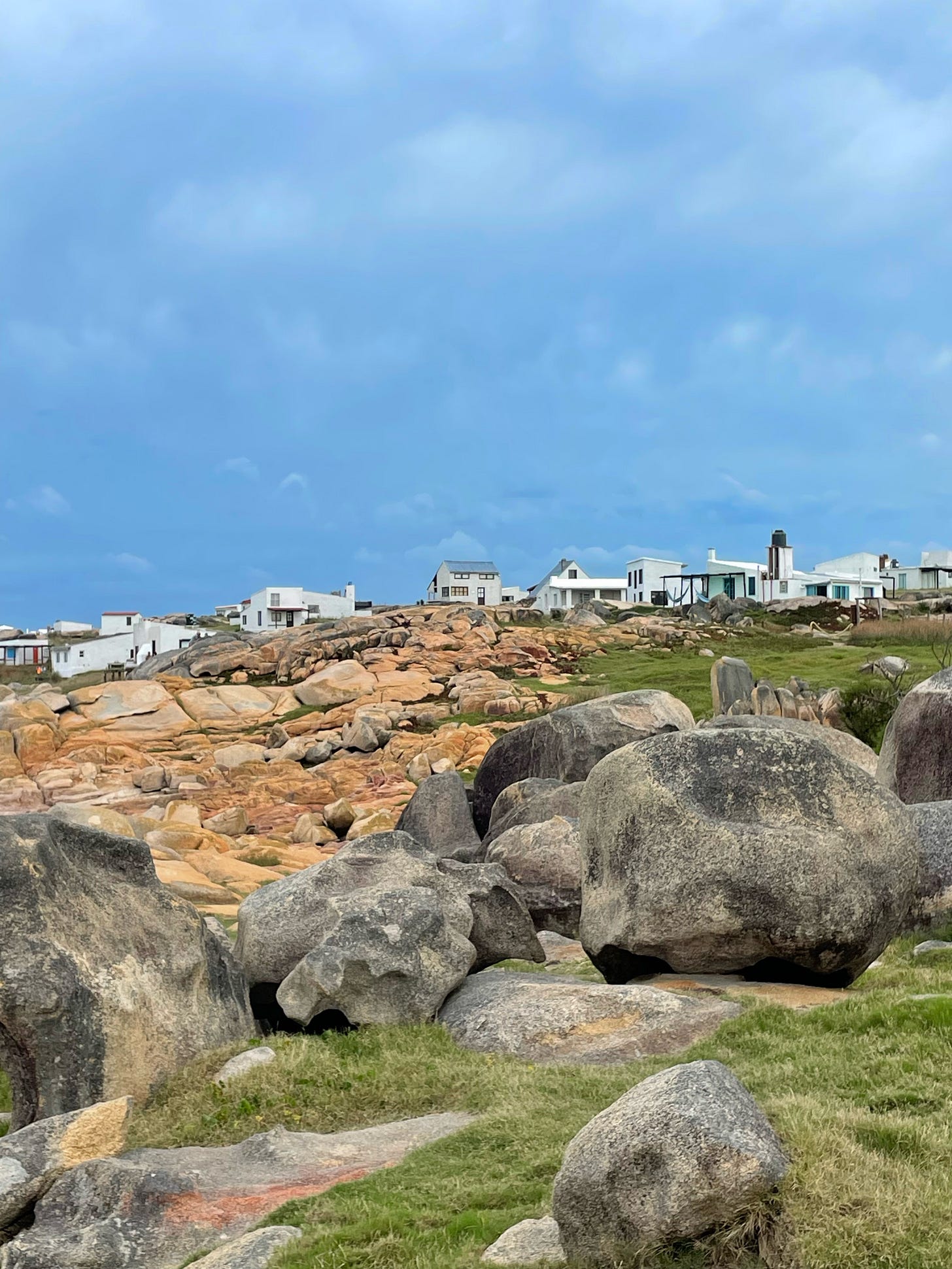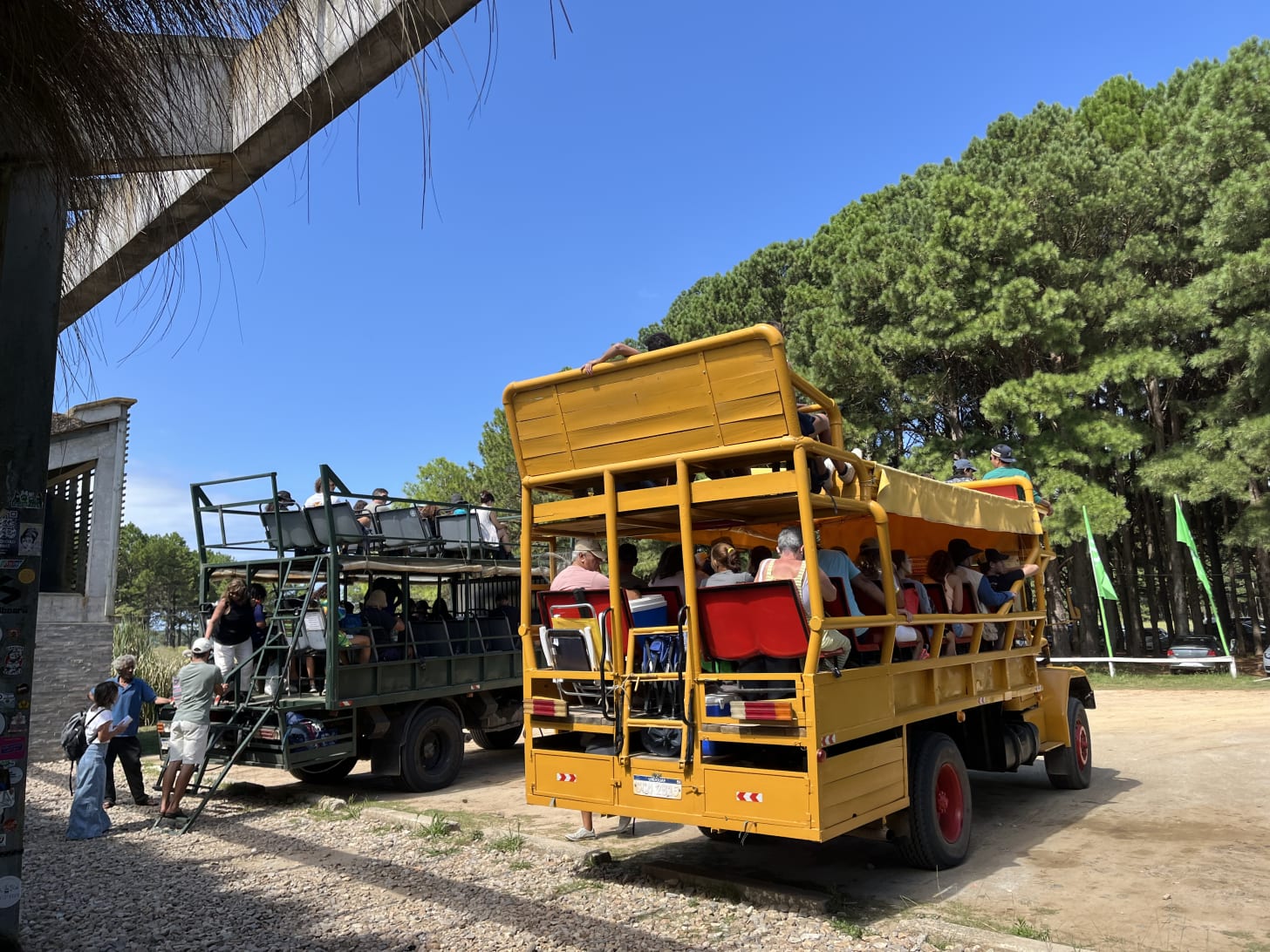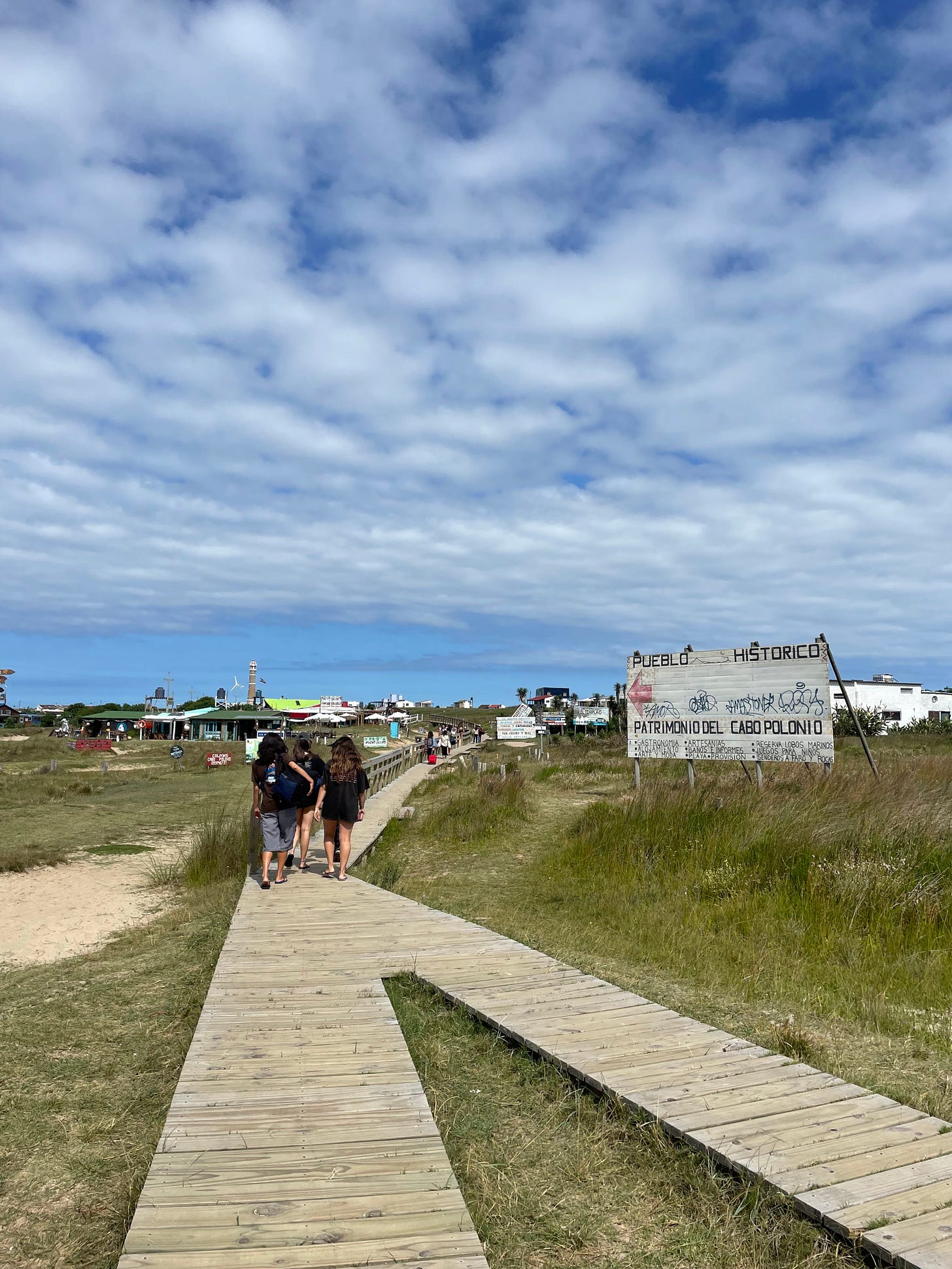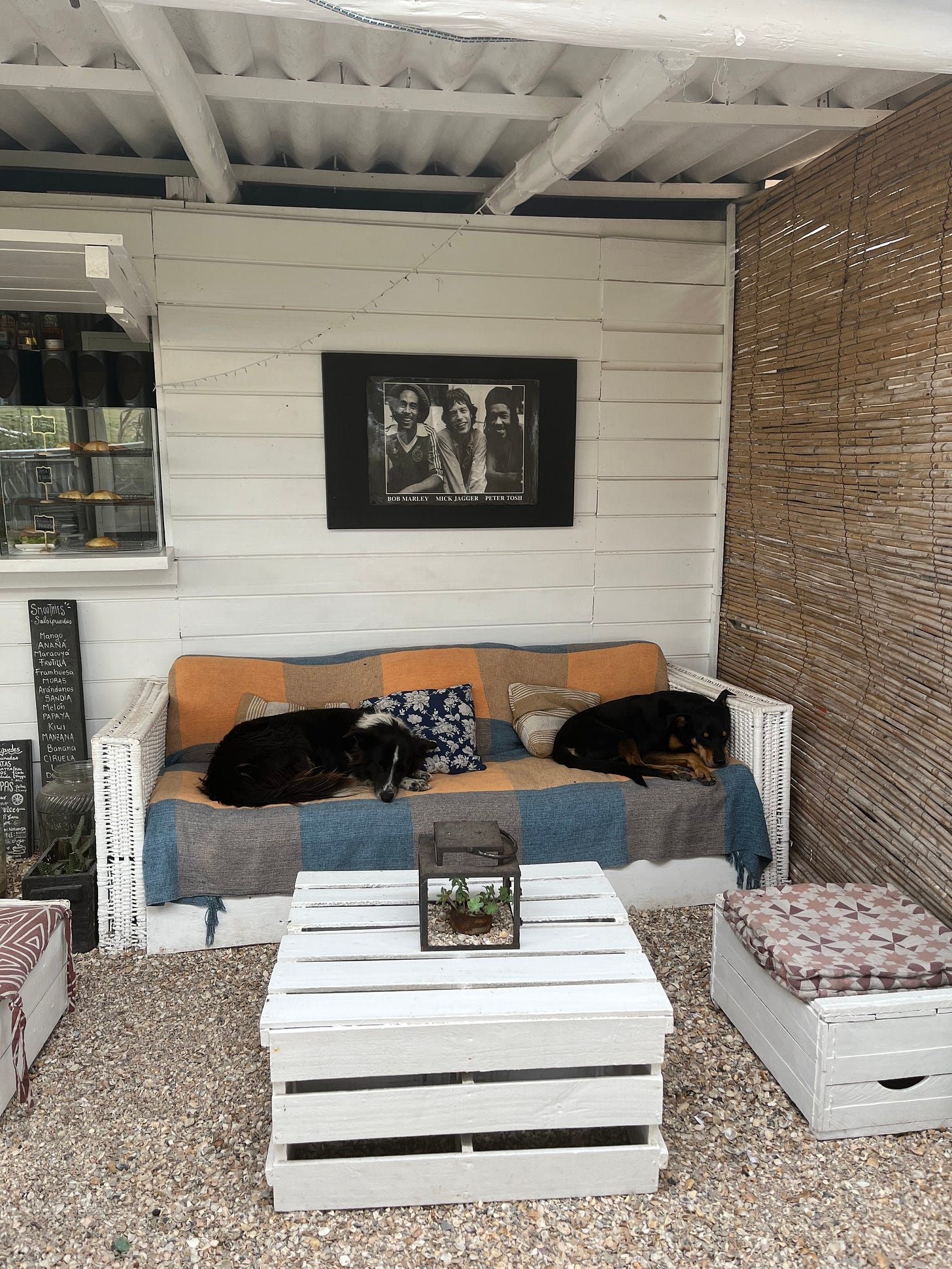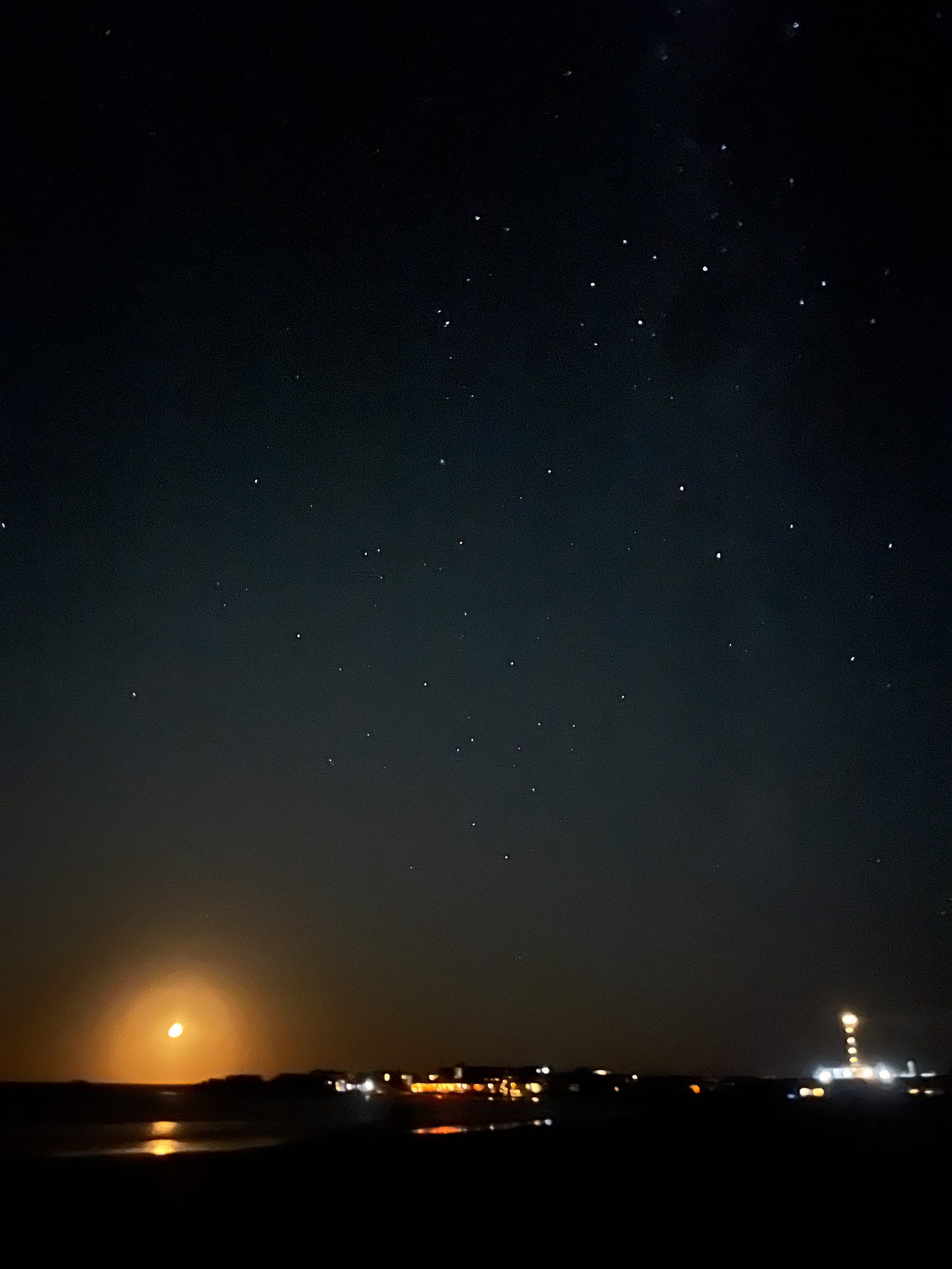I’ve noticed some countries hype the shit out of the destinations in their countries.
In the US, Brazil, and Argentina, we love to make recommendations of spots to check out. You hear about desintations before you enter the country. Word of mouth is strong.
When it comes to Uruguay, you don’t hear a lot. I think part of that is the size of the country and also the fact that Uruguayans can be more reserved. They stay more chill and under the radar.
If you are not in the country, knowing which places to visit can be a mystery.
Punta del Este is a well known city but you rarely hear about places like Cabo Polonio.
This past December, my girlfriend and I were in Brazil for a month, partying and having some great times with one of my oldest travel bros, Wilson.
During one of the parties, we were talking with another friend Jose about Uruguay and that we were heading there next.
He started describing a past trip to Cabo Polonio; a town that was developed without the government’s knowledge, no electricity or running water, and being able to see the stars because of the lack of street lights.
The whole vibe of the place sounded incredible. By the end of the conversation we were hyped and had it on our radar.
A couple months later, we made the trip. Let’s get into what you need to know about this unique destination.
A little background
Cabo Polonio is an “off-the grid” hippy town that is hidden deep inside a national park and behind many sand dunes. All the buildings here are small houses or shacks.
It is a self-sustainable town without electricity or running water. Solar panels, generators, and wind are used for power. Water is collected from wells and rainwater.
From what I understand, the town was originally built without the knowledge of the Uruguayan government. This is part of the reason this place is so self-sustainable.
At this point, it’s a well known place that attracts many visitors. Despite that, it’s still a great place disconnect from the chaotic life of modern society and experience something unique.
When should you go
You should go from December-March.
January and February are the best months to go. The town is more alive and the weather is the best for going to the beach.
We went on March 1 and the town was still pretty active. We had one clear sunny day and one rainy day.
I talked with a bartender at one of the spots in town and he said that during the winter almost everyone disappears. You might only see 1-2 people per week during that time.
A funny thing I’ve noticed is that exactly on March 1 Uruguayans start disappearing from all the beach towns, many buses stop running, and tourist season basically ends.
So most of the action definitely revolves around the summer months.
How long should you go
You should go for at least 2 days.
It’s a very small town so you can see the whole place in a couple of hours. A couple of days hanging out by the beach, doing some surfing, checking out sea lions, and hanging around the bonfire at the hotel/hostel.
How to get there
There are several ways to get to get to Cabo Polonio, but I think bus is the best way to get there.
You can not drive a car directly into the town because it’s inside of a national park and surrounded by sand dunes, so it will just sit in the parking lot for for the entire time you’re in Cabo Polonio.
If you are road tripping around to several towns, it might be worth it. Otherwise, it’s not really worth the cost to rent a car to leave it in a parking lot.
Part 1 - Get to the national park
Bus from Montevideo - 4.5 hours
The most common place to take the bus is from Tres Cruces, which is the main bus station in Montevideo. You can also take a bus from Punta del Este or several other towns. Urubus is the easiest website to get bus tickets. A one-way ticket to/from Montevideo is about $25 USD.
Bus from Punta del Este - 2.5 hours
There is a direct bus line that runs between Punta del Este and Cabo Polonio during the summer months. It stops on March 1.
If you want to go between these cities outside the summer months, you will need to take the bus to/from San Carlos.
To get between San Carlos and Punta del Este, there is a city bus that you can hop on. It stops about 1 block from the bus station in San Carlos. We had to do this to get to Punta del Este from Cabo Polonio and it worked fine. It only costs a few dollars of USD.
You can use the Moovit app to check the city bus lines in Uruguay.
The direct bus line during the summer months will probably be an hour faster than the the route you need to take during the offseason.
Part 2 - Get to Cabo Polonio
Jeep from national park entrance to Cabo Polonio - 30 minutes
Cabo Polonio is not a normal town. It is deep inside of a national park and surrounded by sand dunes.
When you arrive at the entrance to the national park, you will need to buy your round trip tickets to ride a huge jeep. You can find the schedule here.
The jeep takes people through the sand dunes to/from the town. It’s basically a bus designed to drive through sand.
Riding on this thing was pretty cool, definitely an experience.
Once you arrive at the Cabo Polonio station you can walk directly into the town.
Getting around
Cabo Polonio is a very small town with dirt roads. Everything is dirt except for a wooden walkway that goes from the bus station to the center of town.
It’s such a small place that everyone just walks. You don’t need a vehicle.
Bring cash
Most places in Cabo Polonio do not accept credit cards. That includes the hotels and hostels.
Before you come to Cabo Polonio, get some Uruguayan pesos at the ATMs in Montevideo or Punta del Este.
You’re going to need to bring the right amount of cash for your accommodations, plus whatever you are going to spend on food, surf lessons, weed brownies, caipirinhas on the beach, jeep transport, etc.
There was one ATM at the national park entrance but I’m not sure if that’s seasonal or not. Either way, you don’t want to rely on this as these ATMs run out of cash often.
I personally brought whatever cash I needed for the accommodations plus about $200 USD in Uruguayan pesos for a 2 night stay with my girlfriend.
We obviously didn’t spend all the cash but it’s pretty much impossible to get cash once you’re inside the town. So it’s better to bring too much.
Food prices are very similar to everywhere else in Uruguay. Not cheap.
Accommodations
To be honest, I’m not really a budget traveler or hostel guy. I really like to be comfortable and have some space. Maybe ball out a little from time to time.
But seeing the vibe of the town, we decided to try one night in a hostel for the experience.
One thing to know about the accommodations in Cabo Polonio is that there is no electricity or running water. Most of the places use solar panels and allow you to charge your phone in certain spots of the hotel. You may or may not find a shower.
On the first night, we stayed at Narakan in a private room which was basically a beach shack. You could hear the sound of the waves and it was close to the water.
It had a private bathroom with a shower but no electricity in the room. There was a restaurant and breakfast included in the morning. It costed about $70 USD.
The second night we stayed at Viejo Lobo hostel, They have several hostel beds, a private room with no bathroom, and a private room with a bathroom. We stayed in the private room with a bathroom.
It had electricity in the room but no shower. There was a bonfire and pizza party at night so it was more social than staying at a hotel. It costed about $70 USD.
In general, hostel beds are about $30 USD per night and a private room is about $70 USD per night.
If you go during the peak months, I recommend booking early. The other months are pretty flexible but it’s a small town so booking early is always better.
Booking.com is the most convenient way to make a reservation but you may be able to negotiate a lower rate if you talk with the hotel directly.
Restaurants
We weren’t too focused on finding the best food for this trip but there are a decent amount of restaurants in town. I didn’t try anything special enough to recommend here.
You will find some seafood options like Chivipez (fish sandwich) and Miniaturas (bite-size fried fish). These are very typical Uruguayan dishes that are worth trying if you like fish.
There is also asado, burgers, pizza, etc. Food you would find in any town.
We ate at our hotel on the first night and they cooked homemade fresh fish with mashed potatoes. That was delicious.
On the second night, the hostel did a pizza party where they cooked pizza directly on the bonfire. The pizza was fire.
The homemade fish and pizza were better than any of the restaurants we tried in town.
Coffee
There are a few coffee shops in the center of town. I don’t have any specific recommendations but it was easy to find coffee.
Cheap food
There is one grocery store in the middle of town. This is where you can buy water and basic food items to cook.
Most of the guys from the hostel were cooking food they bought from this store. This is definitely cheaper than going to a restaurant.
What to do in Cabo Polonio
Hang out at the beach - There are 2 beaches here, Playa Norte and Playa Sur.
Playa Norte seemed more chill. There were only a few people on this beach. It’s good if you want to relax and have some space.
Playa Sur has a lot more people. There were some guys selling caipirinhas on the beach and people were drinking here. All the surfing was on this side as well. There’s more happening at this beach.
Surf - I saw one surf school and also saw a few surfers in the water. There are some places in town that have surfboard rentals as well. Surfing here could be cool if you have the time.
Sea lions - One of the largest populations of sea lions in South America is here. They hang out near the lighthouse. We chilled on a big rock for 30 minutes and watched them.
Eat weed brownies - When we were walking into the town there were some hippies chilling on the grass selling brownies. We walked around the town high and then passed out in the beach shack while listening to the waves. Good times.
Look at the stars - Because there are no street lights and the town is not really close to any roads, the visibility of the sky is excellent. On the first night we walked around on the beach and could see a ridiculous amount of stars. Very cool experience.
Hang out at the hostel - I think most hostels have some kind of bonfire going at night time. At the place we stayed at, they cooked pizza on the bonfire and played music. We hung out with some different foreigners who were passing through Cabo Polonio as well.
Could I live here
As far as living here, no I honestly couldn’t live here.
The town is too “off-the-grid”. All the stuff that makes it a cool place to disconnect also makes it a difficult place to live.
There is very little electricity other than a few solar panels. Running water does not exist. Wifi is slow. And the phone signal can completely disappear for hours at a time.
Unless you don’t need to work, it’s pretty hard to stay here for more than a few days.
If you’re someone who desires extreme peacefulness and disconnection from the busy world, you might love staying here for awhile.
Quality of life
Cost - 2.5 / 5 (it’s Uruguay)
Internet - 1 / 5
Safety - 5 / 5
Restaurants - 2 / 5
Grocery stores - 2 / 5 (there is a grocery store in the middle of town)
Sports - 2.5 / 5 (if you like surfing)
Gym access - 0 / 5
Nightlife - I didn’t try it (drinking at the hostel around the bonfire is cool)
After spending a couple of days in Cabo Polonio, I can confidently say it is one of the most unique spots I’ve ever been to, regardless of country.
I got the full experience, not using technology and going showerless throughout the trip. While I smelled terrible, my mind felt fresh.
This is the best disconnection I have felt in a long time. I wasn’t worried about anything going on in my day-to-day life. Just living in the moment.
If I ever need to disappear, I’m going to Cabo Polonio.
Until then, I’m off to the next destination. Talk to you guys soon.

